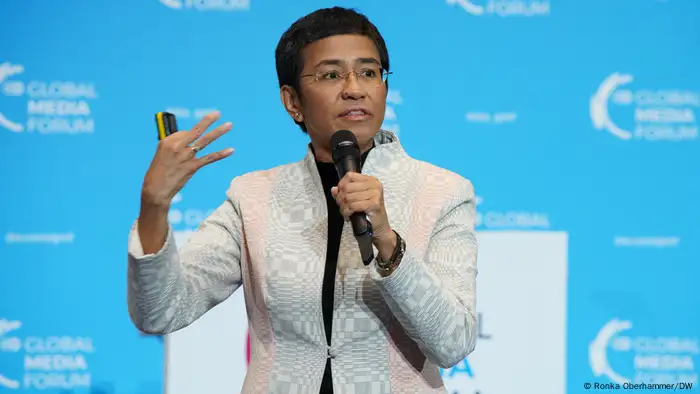International Women's Day
#EmbraceEquity – Five recommended reads on women in media
What specific challenges and risks do female journalists face today? On International Women's Day, #mediadev presents current findings on women in journalism.

"First, I’m attacked for being a journalist, second I’m attacked for being a woman" - Nobel Peace laureate Maria Ressa
Despite progress in gender equality and female empowerment, women remain significantly underrepresented in news reports and on social media.
Many female journalists, including Nobel Peace laureate Maria Ressa, are the targets of online hate campaigns, violence and trolling. Just recently, the investigative reporting project Story Killers revealed the extent of systematic harassment of women reporters across the globe.
International Women's Day marks a call to make female voices heard and fight gender-based violence against journalists. Here are five recent reports that analyze the challenges and dangers women face when they speak up – and what needs to be done to overcome them.
1. The Chilling
The International Center for Journalists, with the support of UNESCO, has published a comprehensive global study on online violence against women journalists, documenting alarming trends and offering solutions to this pernicious problem.
"The Chilling: A global study of online violence against women journalists" is the most geographically, linguistically and ethnically diverse research ever published on the topic. It includes over 100 recommendations for action.
The Monetizing Misogyny research series by #ShePersisted explores how gendered disinformation is weaponized to undermine women's political participation, and to weaken democratic institutions and human rights. Crucially, it also looks at the responsibilities of digital platforms and outlines the solutions needed to address this problem.
3. From Outrage to Opportunity
"From Outrage to Opportunity: How to Include the Missing Perspectives of Women of All Colors in News Leadership and Coverage" examines the harsh realities facing women in news leadership and coverage in India, Kenya, Nigeria, South Africa, the UK, and the USA.
The report focuses on how to break down two fundamental barriers that women face: their underrepresentation and cultural exclusion in news leadership and their invisibility in news coverage/storytelling.
4. A Guide to Protecting Newsrooms and Journalists Against Online Violence
Online violence disproportionately affects women and diverse journalists who are often reluctant to speak out for fear of jeopardizing their careers.
"A Guide to Protecting Newsrooms and Journalists Against Online Violence" by the International Women's Media Foundation details policies and best practices newsrooms can implement to better protect staff members who are targeted simply for doing their jobs.
5. Survey on gender equality in the media and media content
This study, commissioned by Canal France International, analyzes gender equality in the media in four countries across Sub-Saharan Africa: Côte d'Ivoire, Ghana, Niger and the Democratic Republic of Congo. It examines the needs in the fight against sexist stereotypes and gives recommendations on designing new projects that support gender equality.
DW recommends
- Date 07.03.2023
- Feedback: Send us your feedback.
- Print Print this page
- Permalink https://p.dw.com/p/4OL8p
- Date 07.03.2023
- Send us your feedback.
- Print Print this page
- Permalink https://p.dw.com/p/4OL8p
